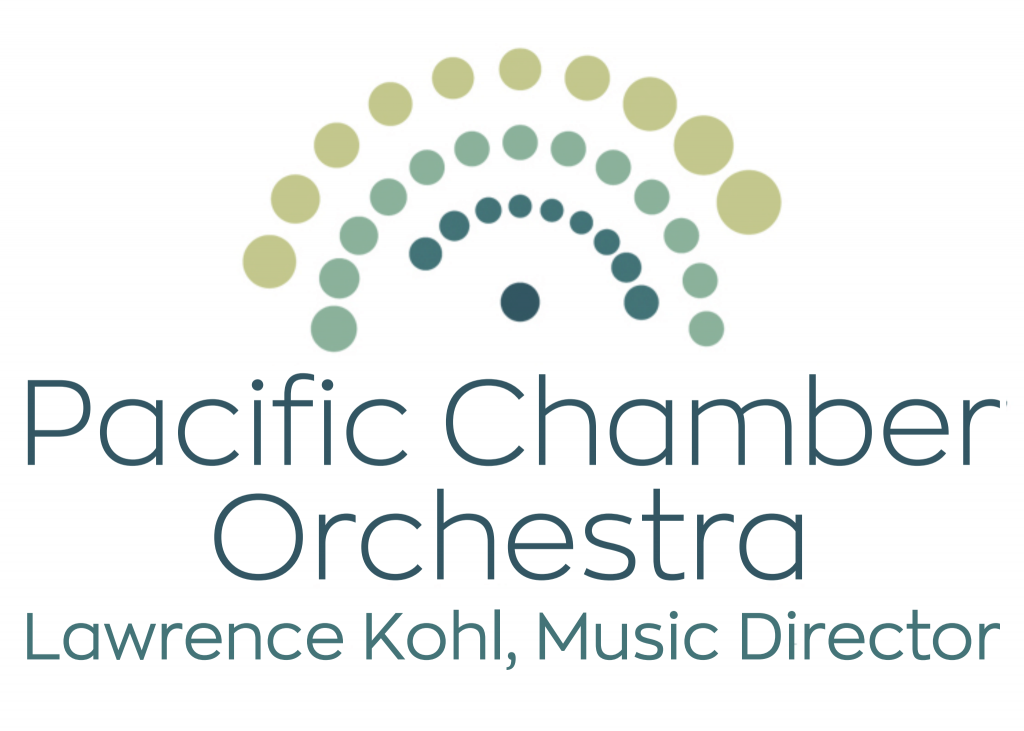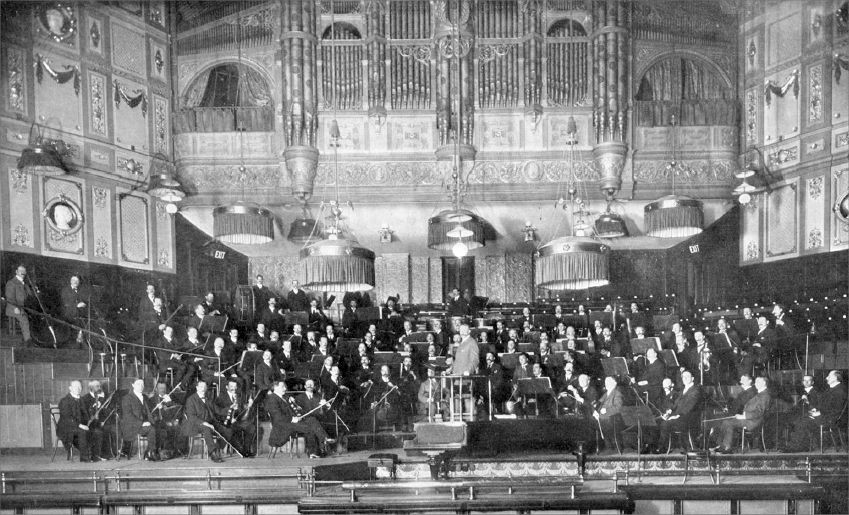The Pacific Chamber Orchestra main season performances are held at the Bankhead Theater at 2400 First Street in downtown Livermore and at St. Stephens Episcopal Church at 66 St. Stephens Drive in Orinda.
Because the Bankhead Theater seats about 500 we describe it as an intimate venue. Many concert halls are even double and triple that size. Because of its size, there really is no bad seat in the house. That said, the two best locations are: (1) In the center, not too close to the front, as that allows the sound blend a little better when it hits your ears. It also allows you to see more of the musicians and performers; and (2) At the back of the theater so you see the entire orchestra from an aerial perspective. This allows you to see the pianist’s hands as they perform.
The venues in Lamorinda seat between 150 and 500 concertgoers – they are small enough that all the seats have good acoustics and easy parking.
Bankhead theater prices range from $36 to $66 depending upon the seats you choose. Students are $20 for all seats. St. Stephens ticket prices are $48 general admission and $20 for students. Here are a few helpful tips:
- The best deal comes when you don’t wait until the very last minute to order tickets. We never offer last minute discounts because we don’t want to undercut patrons who already purchased their seats. Sometimes we offer early bird discounts for those who buy far in advance of a concert. You save the most by not waiting and there is also a better choice of seats.
- Group tickets come with a 10-20% savings depending on the size of your group.
- If you’re a student, be sure to bring your student ID so you can choose any seat for $20.
Here are the ways you can purchase tickets for the Bankhead Theater:
- Single tickets by emailing your request to boxoffice@bankheadtheater.org.
- Single tickets by phone: (925) 373-6800.
- LVPAC Box Office Hours: Single tickets in-person at the box office, 2400 First Street, Thursday – Sunday from noon to 6 pm, and on show days, two hours prior to curtain and 30 minutes after start time.
- Single tickets may also be purchased online through the LVPAC website.
A chamber orchestra refers to an orchestra which can perform in smaller rooms rather than in large-sized concert halls. The acoustic limitations mean that chamber orchestras are smaller (up to 50 musicians) as opposed to a full orchestra (around 100). Of course, Chamber orchestras can play in a concert hall, but a full orchestra would not be able to fit in smaller venues. The music of a chamber and full orchestra sounds very different due to the smaller number of instruments, orchestration, and acoustics of the performance space. [Excerpted from Michael Vincent in Musico Toronto]
In the 18th Century, the orchestras of Haydn and Mozart typically consisted of around 25 to 35 musicians. The Vienna Chamber Orchestra was the first to record all of the Haydn Symphonies and his final six symphonies are scored for two each of flutes, oboes, clarinets, bassoons, French horns, trumpets, and a timpani and strings for an ensemble of about 33 players. The Symphonies of Mozart and Haydn are still considered to be a core of the chamber orchestra literature. However, the size of the ensemble size varies up or down from that “norm” depending upon the instruments required of the repertoire being performed and the size of the performance hall. The Los Angeles Chamber Orchestra has 39 core members, the Cincinnati Chamber Orchestra has 32 core members, and the Chamber Orchestra of Europe has 60 core members.
After Mozart and Haydn the repertoire expanded with composers adding more winds brass and percussion and with more strings sections to maintain balance. These ensembles grew to 80 to 120 members, requiring very large performance halls and became known as the Symphony Orchestra, to be distinguished from the smaller chamber orchestra. Symphony and Philharmonic are synonymous terms. The Vienna Philharmonic has 120 members.
Chamber music ensembles such as string quartets, woodwind quintets, string trios, etc. typically have one string player on a part and are self-directed, while a chamber orchestra is almost always led by a conductor as the complexity requires an overarching interpretation and integration of the many parts.
The Pacific Chamber Orchestra unique sound takes full advantage of all of these elements, blending intimate clarity with symphonic power in perfectly-sized and acoustically superior venues, enabling Maestro Kohl and his musicians to render beautifully textured, creative interpretations. Audiences feel they are virtually part of the performance, able to enjoy subtle details while basking in full ensemble sonorities. As critics have written, “just the right blend of intimate clarity with public rhetoric,” “uncommon freedom” and “music painted in bright bold colors.”
More than anything, we want you to be comfortable so dress in a way that works for you. On average people tend to be dressy casual. However, if you love dressing up and going out, you won’t be the only one. If you prefer being more casual, you won’t be the only one either. In short, “You do You,” and we’ll be happy you’re joining us.
The Bankhead has a wine bar in the lobby. Drinks in sip cups and bottled water are permitted inside the theater. Drinks are not allowed at St. Stephens Episcoal Church.
The Music Director briefly introduces each piece from the stage. During COVID-19 restrictions we are not permitted to distribute paper programs so we email you a printable program prior to the concert. We also display large printed versions of the Program in the lobby. During non-COVID-19 times you are handed a Program with concert information.
Concerts vary in length but usually range from 100-120 minutes including intermission. Most concerts open with an overture or other shorter work about 10 minutes or so in length. Usually that is followed by a concerto with a soloist for another 20-30 minutes; next comes a 20 minute intermission. The second half of the concert is often a full 40-60 minute symphony. This isn’t always the format; some of our concerts have multiple shorter pieces and no long symphony at all.
The most popular option is the Livermore Parking Center garage, located adjacent to the Bankhead at 2350 Railroad Avenue. The garage is operated by the City of Livermore and is free. Plentiful free parking is available at St. Stephens Episcopal Church in Orinda.
In the early days of classical music the audience was rather rowdy—clapping, talking and even shouting during the performance. Then, at some point during the early 20th century, this changed, and the social norm became to applaud only at the end of the piece and not between movements within a work (in other words, clap at the end of Beethoven’s Fifth Symphony and stay silent during the breaks between movements 1, 2, 3 and 4. We want everyone to enjoy hearing all the music and sharing in that transcendental communal experience. So allow your feelings to build and build and if so moved explode with applause and bravos at the end of the piece.
Pacific Chamber Orchestra is little different than a lot of other orchestras on this question. What we do like is people having fun; so take your selfies, check in on Facebook, post on Instagram, send a hashtag, etc., just make sure your phone is on silent out of consideration for the performers.
What we don’t like are phones ringing or making other noises during the performance, or when your phone is blowing up so much it practically looks like strobe light—just like people don’t like those things at the movie theater.
And remember, due to Musician Union regulations, videos and recordings are not allowed.
We hear often that seeing a live orchestra—whether producing a giant wall of sound or playing difficult, technical passages all in sync—is awe-inspiring. There is something about the live experience that just can’t be beat, people say, and that’s music to our ears. People watching is also part of the mix. Newcomers often tell us they are surprised that being in a theater with people of all ages and walks of life, each enjoying the concert in their own way, is such a congenial part of the experience.



